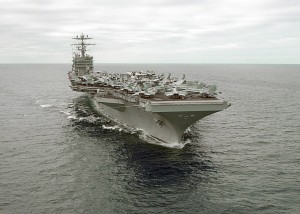[This year has seen US power beginning to shift its central focus from the middle east to Asia. In line with this, the Pentagon has been making new deals for military force “visitations” and deployments, from Okinawa to Guam, Australia, and Philippines, along with new force buildups in Hawaii, Taiwan, Korea, and “joint operational and training” arrangements with India, Vietnam and elsewhere. This article, from TIME magazine in July, explores the responses to, and embraces of, these US moves in the Philippines. — Frontlines ed.]
American ‘Pivot’ to Asia Divides the Philippines
Recent trouble in the South China Sea has renewed debate as to whether the U.S. is a trusted friend, or an old foe
By Catherine Traywick , TIME magazine, July 23, 2012

Romeo Ranoco / Reuters — Members of a militant women’s group hold up placards condemning the joint Philippine-U.S. military exercises during a protest in front of the U.S. embassy in Manila on April 27, 2012
Bai Ali Indayla, a human-rights worker and antimilitary activist, has met just one American soldier. They convened at a picnic table inside a Philippine army camp in Mindanao in 2010 to discuss the alleged suicide of a Filipino who died under mysterious circumstances after starting a job with the U.S. military’s counterterrorism program. Indayla believed the death was suspicious, and she wanted answers, but her first and only interaction with a U.S. soldier earned her none. He was dismissive, she says, as well as arrogant and profane. After a brief and terse exchange, he walked out of the meeting without warning, and she walked away with all of her prejudices soundly affirmed.
The encounter, colored by her mistrust and his apparent indifference, reflects an enduring dynamic at play between two forces in Philippine society: the U.S. military, whose decades-long occupation of the islands eventually gave way to civil unrest, and a small but historically significant network of activists who believe the former’s presence is tantamount to neocolonialism. As China more aggressively asserts its claim over the South China Sea and the U.S. ponders a “pivot” to Asia, the gap between these groups seems to widen, calling fresh attention to the question of U.S.-Philippine ties.
The relationship between ordinary Filipinos and U.S. armed forces is a tortured one, dating back to America’s “liberation” of the Philippines from colonial Spain more than a century ago. The U.S. takeover of the Philippines in 1899 kicked off a short, bloody war, during which Filipinos were forced into reconcentrados (a type of concentration camp), massacred in their villages and subjected to a new torture technique now known as waterboarding. When the U.S. finally gave the Philippines its independence in 1945, sprawling American military bases remained — and with them, an exploding sex industry and a legacy of human-rights violations widely publicized by the national press.
A decades-long antimilitary movement culminated in the 1991 closure of American bases and the ousting of U.S. troops. Yet American forces have nevertheless maintained a limited but continuous presence in the country, where they conduct regular joint training exercises and have, in recent years, extended antiterrorism efforts. Dubbed “the second front of the war on terror” in 2002, western Mindanao has played host to 600-strong U.S. troop rotations as they pursue two al-Qaeda-linked terrorist groups. Though officially base-less, barracks, ports and communications infrastructure emerged within and near the Philippine military camps that host American soldiers. This year, the Aquino administration granted the U.S. Navy permission to use the former U.S. base in Subic Bay for the service of U.S. warships. Continue reading






